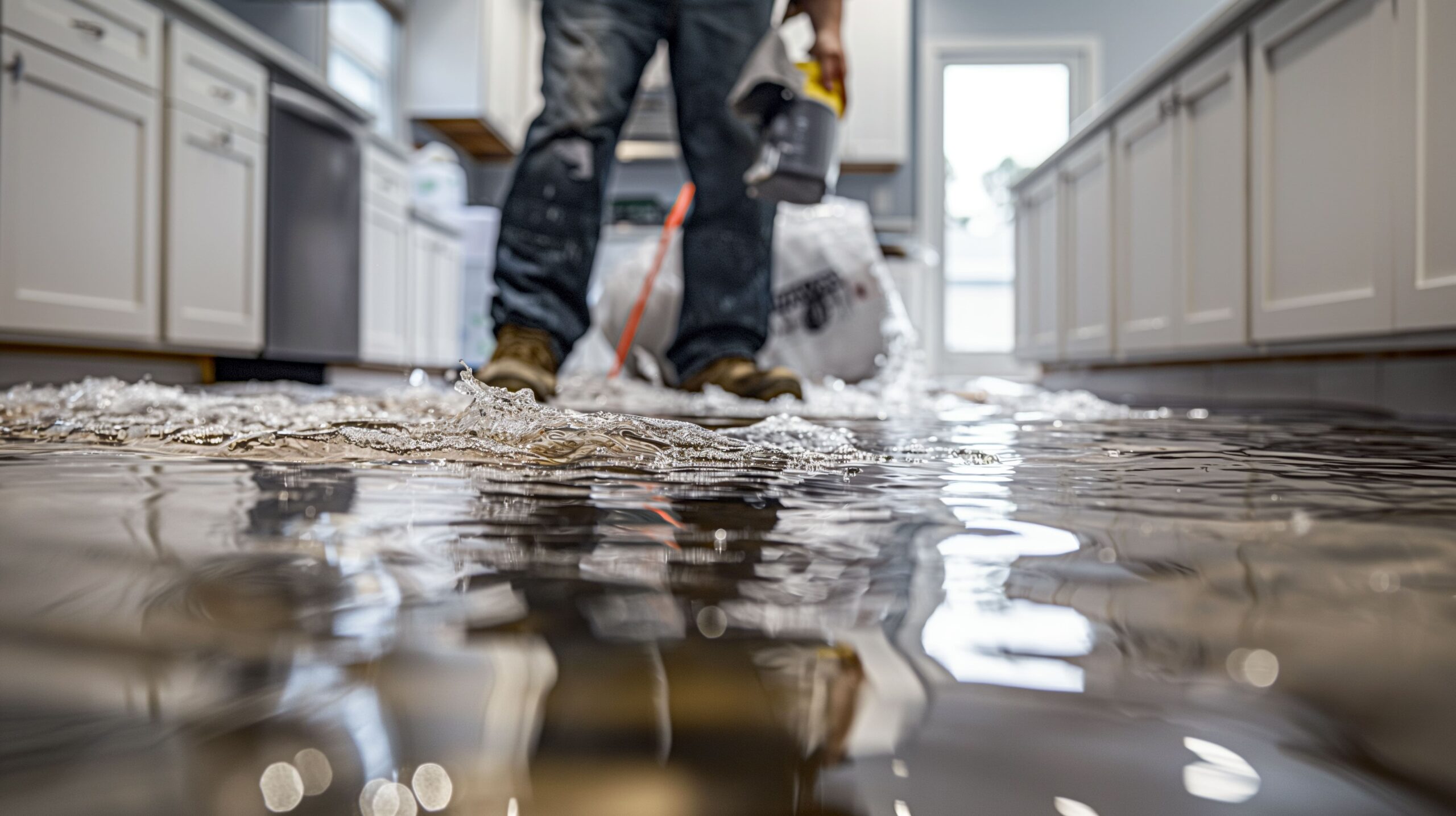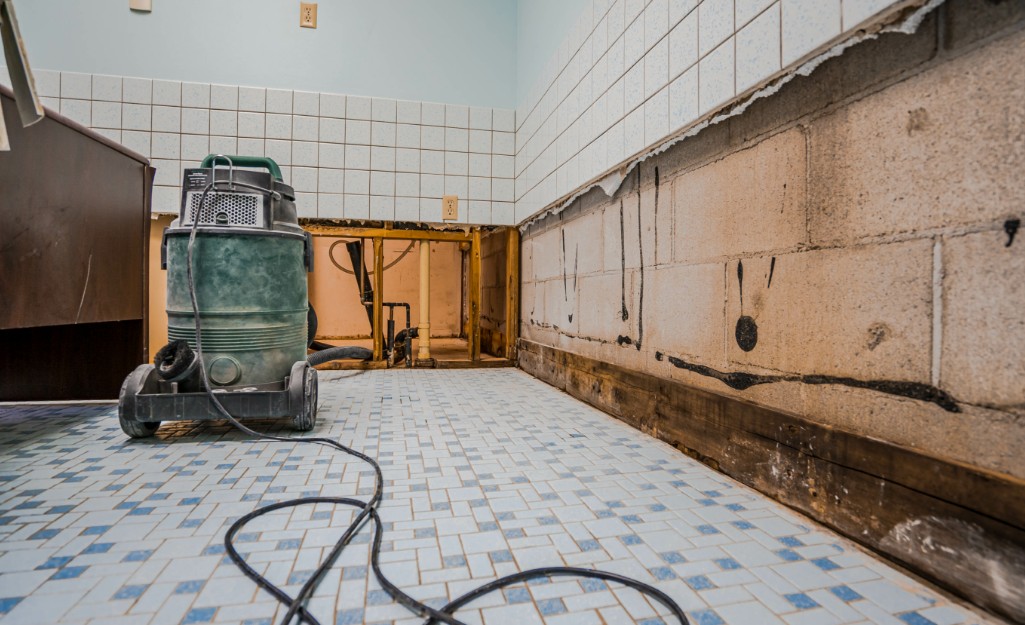How Flood Cleanup Services prevent long-term damage to property
Water Damage Restoration 101: Understanding the Process and Cost
Water damage can strike suddenly, leaving home owners in a state of complication. Recognizing the remediation process is crucial for effective healing. From examining the damage to picking the right company, each step impacts the general result and cost. Factors such as the sort of water damage and necessity also play a substantial duty. What are the certain methods made use of in repair, and how can one prepare for potential costs?
Kinds Of Water Damage

Initial Evaluation and Examination

Water Removal Techniques
Following the initial evaluation, efficient water extraction strategies are employed to mitigate damage and prevent more concerns. These strategies entail the use of specialized equipment such as completely submersible pumps and industrial-grade vacuum cleaners - Water Damage Restoration. The selection of method depends upon the quantity of water existing and the kind of products influenced. For standing water, completely submersible pumps are normally made use of for rapid elimination, while vacuums are suitable for removing water from rugs and furniture. Furthermore, progressed approaches like water extraction mats might be utilized for hard-to-reach areas - Flood Cleanup Services. The objective is to get rid of as much water as possible, lessening the possibility for mold growth and structural damage. Motivate and effective water removal is crucial in the total water damage reconstruction procedure
Drying and Dehumidification Process
As soon as the water extraction is total, the drying out and dehumidification process becomes vital to bring back the affected location. This phase normally utilizes industrial-grade dehumidifiers and air movers to effectively decrease moisture levels. The dehumidifiers attract wet air, eliminating excess moisture, while air moving companies circulate air to speed up dissipation. Tracking equipment is typically utilized to track humidity and temperature levels, guaranteeing optimal drying out problems. The duration of this procedure can vary depending on the level of the water damage and ecological factors. It is vital to thoroughly dry all influenced products, including walls, floor covering, and furnishings, to avoid mold growth and architectural damage. Appropriate implementation of this action is crucial for an effective reconstruction result.
Cleansing and Sterilizing Damaged Areas
As soon as the drying out process is complete, an extensive preliminary evaluation and inspection of influenced areas is crucial to identify contamination degrees. Effective cleaning strategies and appropriate products should then be utilized to remove debris and discolorations. Finally, sanitization and sanitation approaches are vital to assure that damaging pathogens are gotten rid of, restoring the space to a safe condition
First Evaluation and Examination
Before starting any kind of repair efforts, an extensive preliminary assessment and assessment of the influenced areas are crucial for effective cleaning and sanitizing. This process entails determining the level of water damage, identifying the resource of the water breach, and reviewing the materials impacted. Examiners normally search for indications of mold development, structural honesty concerns, and harmed belongings. The assessment likewise includes inspecting dampness degrees using specialized devices to guarantee no covert water pockets stay, as these can cause further problems. Documenting the findings is essential for planning the next steps in the reconstruction process. A comprehensive initial analysis makes it possible for repair professionals to develop a targeted strategy for reliable cleaning and sanitizing, ultimately lessening damage and wellness risks.
Cleaning Up Techniques and Products
Efficient cleaning and sterilizing of water-damaged areas need a variety of techniques and items customized to the certain materials impacted. For porous surface areas like drywall and carpeting, extraction techniques are necessary to eliminate excess dampness, followed by deep cleansing with specialized detergents. Non-porous products such as tile or metal can be cleaned up using commercial-grade cleaners that successfully get rid of impurities. Heavy steam cleansing is an additional reliable method, especially for carpetings and furniture, as it utilizes high temperature levels to eliminate microorganisms and mold (Flood Cleanup Services). Furthermore, green items are significantly popular for their security and efficiency - Residential Water Damage Repair. Inevitably, picking the proper cleaning methods and items not only assures instant tidiness yet additionally help in protecting against more damage and carcinogen connected with water breach
Sanitization and Disinfection Techniques
When dealing with water damage, proper sanitization and sanitation approaches are vital to assure the safety and security and wellness of the damaged setting. After first cleaning, surface areas must be treated with appropriate disinfectants to eliminate virus, mold, and bacteria that grow in moist conditions. Typical techniques include using EPA-approved chemical anti-bacterials, which can be used with spraying or wiping strategies. Additionally, ultraviolet (UV) light systems can successfully disinfect locations by neutralizing microbes without rough chemicals. The option of method often depends on the sort of products affected and the level of contamination. Inevitably, thorough sanitization not only brings back a safe home but likewise helps avoid future health dangers linked with sticking around moisture and mold and mildew growth.

Repairs and Restoration Options
Examining the damage created by water exposure is important for identifying the appropriate repairs and reconstruction alternatives. Home owners may face various issues, including harmed drywall, warped floor covering, and compromised structural elements. Relying on the extent of the damage, repair services might involve changing areas of drywall, setting up brand-new floor covering, or enhancing architectural light beams. In instances of extreme damage, complete substitute of afflicted products may be necessary. In addition, expert conservators commonly suggest making use of wetness meters to assess hidden wetness levels prior to deciding on the very best program of activity. It is necessary to act promptly to avoid mold and mildew growth and more wear and tear. Choosing the appropriate alternatives not just restores the residential click here for info or commercial property yet likewise guarantees long-lasting safety and security and performance.
Factors Affecting Restoration Expenses

The extent of water damage straight impacts the repair sets you back home owners can expect to sustain. Factors such as the source of the water, the duration of direct exposure, and the afflicted products greatly affect prices. For instance, clean water damage from a busted pipe is usually much less pricey to recover contrasted to damage brought on by sewer. Furthermore, the degree of contamination determines the requirement for specialized cleaning and disposal services, further boosting costs. Geographical location also contributes, as local labor prices and accessibility of restoration services can vary. The urgency of the reaction influences prices; quicker treatments usually lead to lower total expenses by stopping additional damage. Recognizing these variables is vital for homeowners when estimating restoration prices.
The 3 primary kinds of water damage are classified based on contamination degrees: clean water, gray water, and black water. A complete initial analysis and assessment are crucial steps in the water damage restoration procedure. For standing water, completely submersible pumps are generally utilized for rapid elimination, while vacuum cleaners are ideal for extracting water from rugs and furniture. The level of water damage directly impacts the restoration costs house owners can expect to sustain. Clean water damage from a busted pipeline is typically less costly to restore contrasted to damage created by sewer.